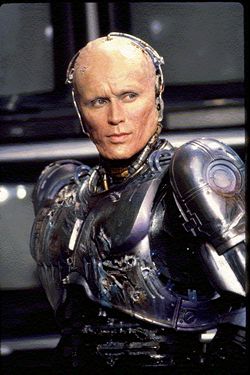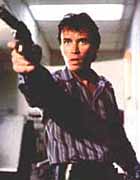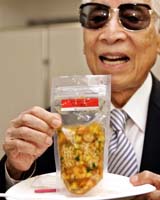
I've already lost count of the number of swords I own. It isn't a huge number, but it's more than the average person. (Of course, how many "average" people own even one sword?) My previous acquisition was a Last Legend katana and I was so happy with it that I figured it would be a long time before I purchased another sword.
It was about three years... I guess that's a long time for me.
I discovered
Cheness Cutlery's shinobigatana. They make two versions, the Onibasu and the Oniyuri. The Onibasu is the "economy" version and list prices at $299.99, but seems to be on a semi-permanaent sale at $189.99. Since Santa Claus was financially kind to me this year, I purchased the Oniyuri version, which lists at $499.99 and is also on semi-permanent sale for $249.99.
The Oniyuri is advertised as being made to the specifications of a Togakure Ryu sword, as commissioned by a Bujinkan Dojo based on information they received from Hatsumi-sensei at some point. I can't verify the truth, but it sure sounds good. These are the technical specs for those who care:
metallurgy: 9260 Silicon Alloy Carbon Spring Steel, full hand forged, through Tempered, Oil Quneched, Hand Polished.
Dimensions: Overall sheathed length: 44.5 inches. Cutting edge: 23 inches. 0.3 inch width, 1.25 inches height. The sori, or curve in the blade is a deviation of 0.5 inches.
Weight is 2 lbs 12 oz.
Tsuka, or handle, length is a whopping 14 inches!
Now, I am not a sword connoiseur. All of my stuff is made for cutting and is sturdy, but it was all made by Indians or Chinese folks, none of it is a true Nihon-to, forged with the blessings of the kami, and direct from the Land of the Rising Sun. But I do know that oil quenching is a no-no for Japanese sword fans, amd double-pinning the tsuka to the blade is a faux-pas. Still, this is an impressive cutting tool made in the image of a true shinobigatana, or ninja-to.
The obligatory word on the ninja-to: We all know by now that the straight bladed, square-guarded short sword that is instantly familiar to even the previously mentioned "average person" is a Hollywood fantasy. Yes, I know that Christian Bale even used one in Batman Begins... But they were living in Tibet! Obviously, if you are a secret agent -- no matter what era you live in -- you don't want to be carrying around tools which instantly identify you as a spy or assassin.
A ninja sword tended to be whatever sword fit the disguise you were in: rich samurai, poor wandering ronin, armed monk, traveling merchant. Even so, Togakure Ryu seemed to favor a "trick" sword that was made to look like an everyday katana, but had a shorter cutting blade. This provided some advanatges to the owner. The most widely known is the quick draw. The shorter length allows the blade to clear the scabbard faster. It also messes with the distance of an attacker. (Ponder that, those of you in the know...) The sword could be used in tight spaces. The hollow in the bottom of the scabbard could be used to hold small items intended to be secret, or even blinding powder. (Note: If you own a ninja sword from Cheness, DON'T put powder in your scabbard. I know it sounds cool, but the oil from your sword will creep into the powder and creat a mess over time. In eons past, replacement saya were much easier to come by than in 21st Century America.)
I haven't had a chance to cut anything with it. But the workmanship holds up with the Hanwei line so many people have, and is almost as good as Last Legend. These seem to be the current standards for swords to be used (or is that "abused") by martial artists. Here is a thread from
Kutaki discussing the Cheness swords. And here is an interesting thread on whether or not there ever was a straight bladed ninja-to from
e-Budo. I post this last link because it opens the question: how do we know the story about the curved, short Togakure Ryu sword is true? Has anyone ever found one? It's a mindbender for sure...
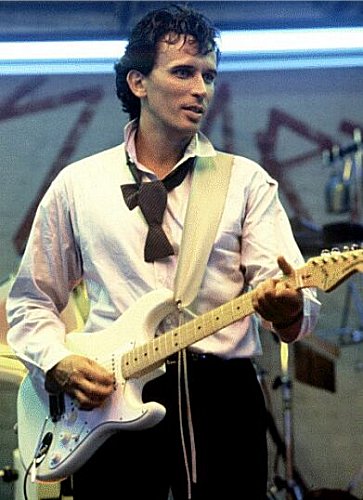 Calling all Blue Blaze Irregulars! Instant newsflash...
Calling all Blue Blaze Irregulars! Instant newsflash...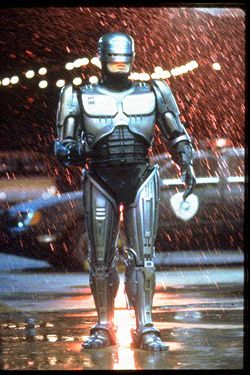 What do you expect from the man who played RoboCop? While Peter Weller is a cult favorite on the Sci Fi Convention circuit, it's not like he ever made a big, important movie.
What do you expect from the man who played RoboCop? While Peter Weller is a cult favorite on the Sci Fi Convention circuit, it's not like he ever made a big, important movie.






